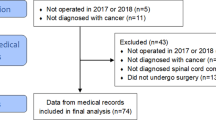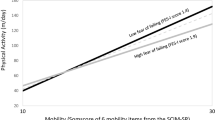Abstract
Study design: Descriptive analysis of data gathered in an information system.
Objectives: To explore the predictions of professionals and patients regarding functional outcome after spinal cord injury related to the final results after inpatient rehabilitation, in order to make prognostics of rehabilitation outcome more successful and enlarge the role of the patient in selecting realistic rehabilitation goals.
Methods: Data from 55 patients with spinal cord injury admitted to the rehabilitation centre. Expectations of the rehabilitation team and the patients regarding future independence in performing six daily activities were compared to the functional results at discharge. The results of patients with different level and extent of lesion were analyzed.
Results: In 52% of all performed skills, independence was achieved at discharge. Professionals and patients made similar predictions. If they both expected independence after rehabilitation, 90% of the skills were performed independently at discharge. If they both did not expect independence only 3% of the functional results were positive. Of all combined predictions 64% was correct. Correct predictions were most often found regarding self-care skills of patients with paraplegia and regarding mobility of patients with complete lesions. Prediction of self-care outcome of patients with tetraplegia is far more complicated. There was a considerable variation in predictions of mobility potential, especially regarding patients with incomplete lesions. If the team and patients agreed upon expected independence in mobility skills of these patients, the final results were mostly positive.
Conclusions: Prediction of functional outcome after spinal cord injury was most successful if the expectations of the team and patients were combined. Prognosis of self-care outcome of patients with paraplegia and mobility potential of patients with complete spinal cord lesions was usually clear at admission. However, selection of realistic goals concerning self-care skills of patients with tetraplegia and mobility skills of patients with incomplete lesions is far more complicated. Gradual adjustment of objectives is needed during the rehabilitation process in close collaboration between the professionals and the patients.
Spinal Cord (2000) 38, 185–191.
Similar content being viewed by others
Log in or create a free account to read this content
Gain free access to this article, as well as selected content from this journal and more on nature.com
or
Author information
Authors and Affiliations
Rights and permissions
About this article
Cite this article
Schönherr, M., Groothoff, J., Mulder, G. et al. Prediction of functional outcome after spinal cord injury: a task for the rehabilitation team and the patient. Spinal Cord 38, 185–191 (2000). https://doi.org/10.1038/sj.sc.3100965
Published:
Issue date:
DOI: https://doi.org/10.1038/sj.sc.3100965
Keywords
This article is cited by
-
Can combined aerobic and muscle strength training improve aerobic fitness, muscle strength, function and quality of life in people with spinal cord injury? A systematic review
Spinal Cord (2015)
-
A comparison of patients' and physiotherapists' expectations about walking post spinal cord injury: a longitudinal cohort study
Spinal Cord (2012)
-
Parameters for positive outcome of the in-hospital rehabilitation of spinal cord lesion patients: the Boberg Quality Score
Spinal Cord (2010)
-
Who wants to walk? Preferences for recovery after SCI: a longitudinal and cross-sectional study
Spinal Cord (2009)
-
Walking ability at discharge from inpatient rehabilitation in a cohort of non-traumatic spinal cord injury patients
Spinal Cord (2009)



